The Atlantic Forest
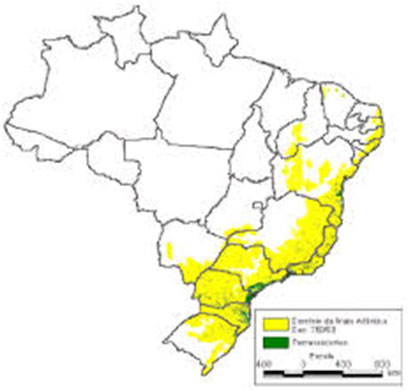
The Atlantic forest covered an area of 1,315,460 km2 and originally spanned 17 Brazilian states: Rio Grande do Sul, Santa Catarina, Paraná, São Paulo, Goiás, Mato Grosso do Sul, Rio de Janeiro, Minas Gerais, Espírito Santo, Bahia, Alagoas, Sergipe, Paraíba, Pernambuco, Rio Grande do Norte, Ceará and Piauí.
Today only 8.5% patches of over 100 hectares remain. If one adds together thepatches of native forest above three hectares, the remaining cover is 12.5%. TheAtlantic forest is a world hotspot, one of the richest biodiversity areas in the world… and one of the most threatened. To protect what is left, many of the remaining areas have been declared as Bio-sphere Reserve by ENESCO and wereelevated to the rank of National Asset in the Brazilian Federal Constitution in 1988.
The original composition of the Atlantic Forest is a mosaic of different kinds of vegetation, namely: dense, open and mixed ombrophily forest, deciduous and semi-deciduous seasonal forest, high level fields, swamps and ‘restingas’.
72% of the Brazilian population, today, livesin the Atlantic forest area, according to the IBGE (InstitutoBrasileiro de Geografia e Estatística) findings in 2014. That means that some 145 million people inhabiting 3429 municipalities, are situated inside this area, while 948 are located at its border (IBGE, 2010).

The bill that was sanctioned in the Mata AtlânticaLaws, provides rules as to how the remaining forest and natural resources are to be managedand used. After moving through Congress for 14 years, it became law in 2006.
As a consequence, Brazil today, has over 1100 RPPNs (ReservasParticulares do Patrimônio Natural – Private Natural Reserves of the National Asset). Over 760 are located in the Atlantic Forest, also for the protection of endangered species: of the 633 declared for protection in Brazil, 383 live in the Atlantic Forest.
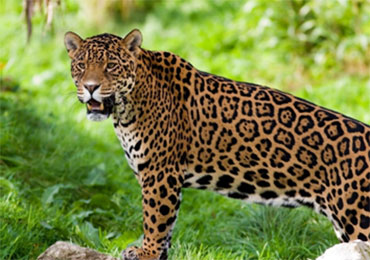
The WWF divided the Atlantic Forest in 15 eco-regions with the objective to preservethe species of flora and fauna, through specific actions relevant and appropraite for each region with similar biomass. The biodiversity of this forest is similar to the one in the Amazon, probably much more diversified due to the variations in altitude and longitude of the forest vs the Amazon.

The Atlantic Forest is an immense endemic centre and its vegetation formations are extremely heterogenic, branching from open fields of the semi-arid ‘caatingas’, impassable mountainous regions, down to rainy areas in the low lands and near the ocean swamps. The fauna, too, is endemic to innumerablespecies, several with animals native to this land, like the mico-leão-dourado(Leontopithecusrosalia) or the onçapintada (pantheraonca)

There are numerous additional subdivision of the biomass, be it for different climactic conditions, recuperation zones, altitude areas and human contact-tension zones. The interface with each area creates unique conditions for diversity in flora and fauna.
Recent studies indicate that 39% of mammals are endemic; and so are 160 species of birds and 183 of amphibious animals.
In terms of flora, 55% of the arboric species and 40% of the non-arboric ones, are endemic to the Atlantic Forest. 70% of the world bromeliads and orchids can be found in this habitat, only. 64% of the palm species are from this region. In all, over 8000 vegetation species are endemic in this forest.
In the Atlantic Forest, today, the following known species can be found:
More than 20000 species of plants, of which 8000 endemic
270 of mammals 992 of birds
197 of reptiles 372 of amphibious
350 of fishes
Where the Peralba is situated, there are two major kinds of biospheres:
Ombrophily forest of the coast of Bahia
Coastal swamps
FlorestaOmbrófilaCosteira da Bahia
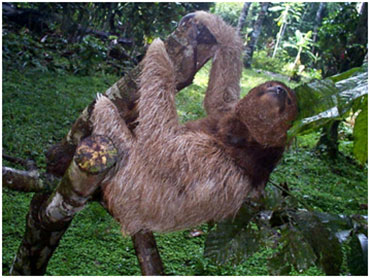
The Ombrophily forest of the coast of Bahia is an eco-region in the Atlantic Forest that extends from the limits ofthe Sergipe State, down south to the north of the Espirito Santo sSate. Its width from the coast, varies between 100 and 200 km and the area is approximately 110,000 km2.
It is a major endemic centre for all species, of which many are in danger of extinction, like the tree of pau brazil, or the mico de caradourada, preguiça de coleira(Bradypustorquatusor sloth).
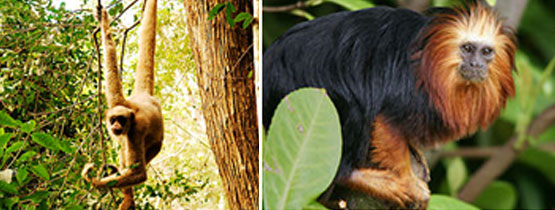
Biodiversity This is the most important endemic region of the whole Atlantic Forest, characterized by an extremely rich bio-diversity. There are 12 species of primates or 60% of such species for the whole Mata Atlantica. Notable are the mico-leão-de-cara-douradaand themacaco-prego-do-peito-amarelo. Birds are so varied that 50% of all speciesof the Atlantic Forest are present here. UNA, a town nearIlheus, was evaluated as having the highest density of fauna and flora per hectare of the whole region.
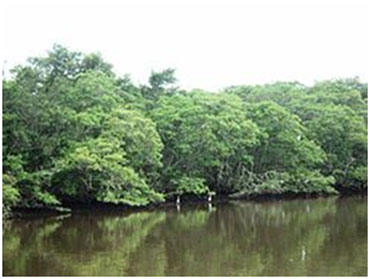
Characteristics These swamps constitute separate areas, mainly on the estuary of rivers, particularly the Rio Doce in the State of Espirito Santo. The climate is humid and can reach 2600 mm per annum of rainfall. There are three types of swamps: Rhizophora Avicennia and Laguncularia
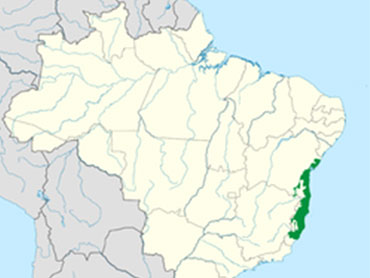
The Coastal Forests of Bahia are set in a eco-region of the most rich Atlantic Forest in Brazil. This extends from Salvador, down the whole coast of the state, until thenorth reaches of the Espirto Santo state. This regionstretches from approximately 100 to 200 km from the coast and its area is as big as 110/130 thousand km2.
This is one of the most threatened areas in the world, as only 5% of the original forest still exists.

Conservation The region, particularly the Mesa-region of South Bahia and the Reconcavo (where the Peralba is situated), has, for centuries, been a producer of cacao and, as a consequence,the original forest was preserved, as the cacao plants grow in the sub-Bosque. For this reason, 7% of the original forest cover still exists. Unfortunately,local farmers own the majority of such lands, whichmakesit difficult to protect what is left.
In the south of Bahia, there is a mosaic of protected areas that totals approximately 500km2, while the ReservaBiológica de Sooretama e a Reserva Natural Vale adds another 440 hectares.
The importance of such an ecosystem is put intojeopardy by the ongoing devastation and eco-corridors that have been built in numerous parts. A project to create an eco-corridor to link some 86000km2 is under way; it will link Bahia to the Espirito Santo State.
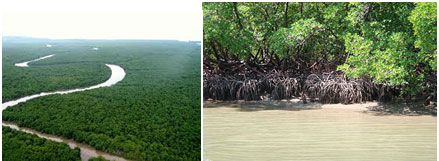
Conservation The Bahia swamps are under strong anthropic pressure as they coincide with densely populated areas. Little has been done to protect this vital environment and the few initiativeshave barely left the project phase.
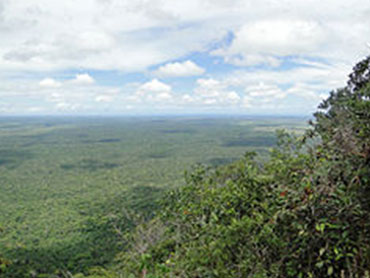
Characteristics In this region, the predominant phytol-physiognomyis the dense ombrophily forest with formation of ‘restingas’ (coastal enclaves) and swamps on the coast.
In the forest, trees reach 35 metresor more. It is the stretch of Atlantic forest most similar to the Amazon, particularly below the Reconcavo, the area where Salvador is located (the Peralba farm is 68 km south from Salvador).These forests, known as Mata do Tabuleiro (forest of plateau), are seasonal semi-deciduous – those that one sees in films, with numerous lianas reaching for the ground.
The climate is hot and humid withannual rainfalls between 1200 and 2400mm. There is a mild dry season between September and December in the north part (where the Peralba lays) and May to September in its south.
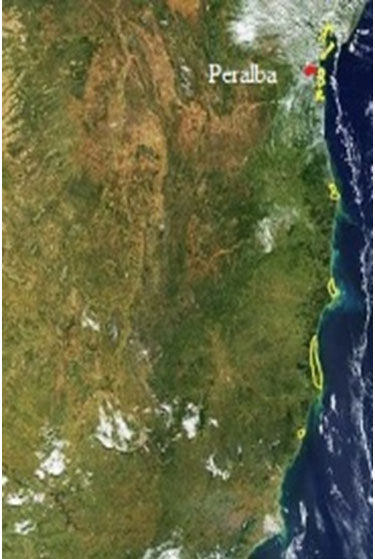
Mangues da Bahia The swamps in Bahia form a region of some 2000km2and form part of the Atlantic Forest (the yellow patches in the image). They represent swamp areas on the coast line. This is by far the most endangered ecosystem of the Atlantic Forest.
The Peralba Atlantic Forest

A study carried out by a researcher from Ceplac, Dr. Paulo Reis, defined our forest area as possessing two distinct bio-physiognomies: Coast Ombrophily Forest of approximately 1800 hectares and Bahia laguncularia swamps
The first phytol-physiognomy has three areas connected:
ThePeralbaFloresta, which has around it the plantations of lime and coffee (+/-350 hectares)
To the south, the Peralba Sucupira, the first of three conjugated areas of PeralbaAtlanticaLeste e Oeste (+/-1.100 hectares)
At the extreme south, thePeralbaJacarandá,approximately 550 hectares.
The second bio-physiognomy is composed of coastal swamps divided into two distinctareas:
ThePeralbaOceano, historically dedicated to pasture, is now growing back since we came in 2005. It is returning to its original primal state of being a mangrove of the laguncularia kind.
A Peralba Porto, with swamps of the avicennia kind. The house of the Coronel Viannastill stands here at the old port of the farm
We preserve all these areas with great care and strong discipline.

.jpg)
.jpg)
.jpg)
.jpg)
.jpg)
.jpg)
.jpg)
.jpg)
.jpg)
.jpg)
.jpg)
.jpg)
.jpg)
.jpg)
.jpg)
.jpg)
.jpg)
.jpg)
.jpg)
.jpg)